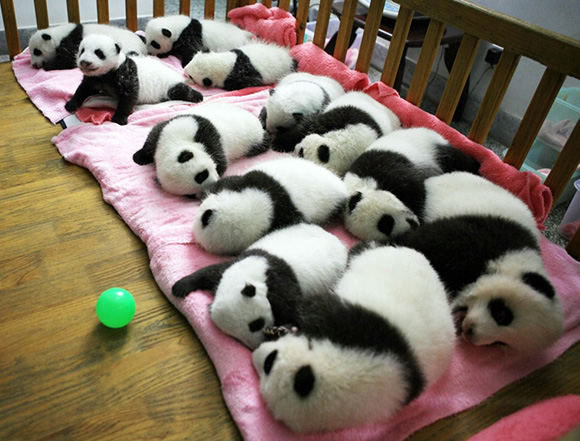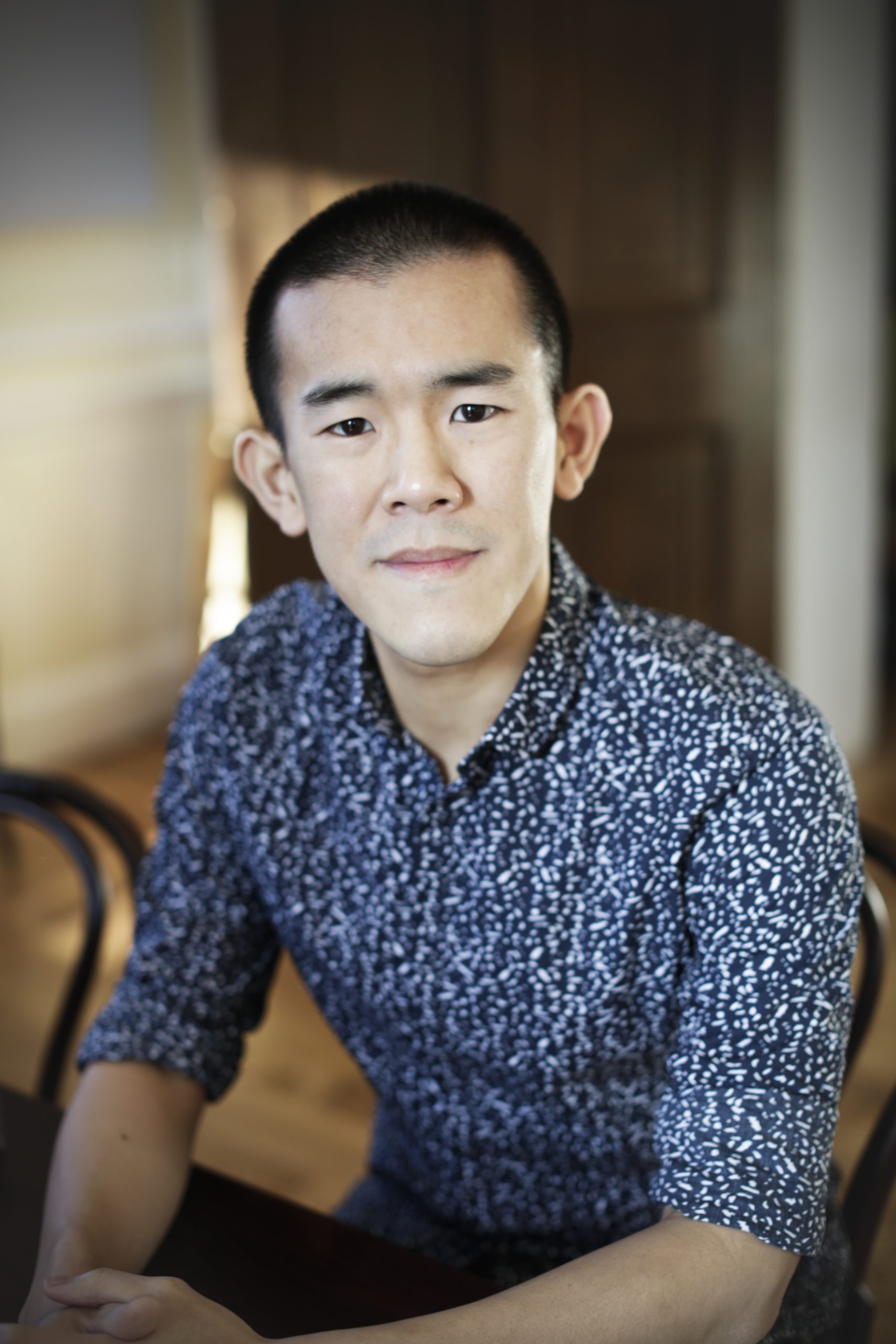
Today, there are 520 pandas living in captivity, and fully a quarter of them are the descendants of an especially fecund and recently deceased individual named Pan Pan. Like an ursine cross between Don Juan and Jean Valjean (he is simply Panda 308 in the official studbook), Pan Pan seeded the zoos and research centers of the world with his progeny. You merely have to gesture at his family tree, with its multiply sprouting branches, to counter the inaccurate stereotype that pandas are bad at sex. As Maggie Koerth wrote last year in a feature published at FiveThirtyEight, “Pan Pan saved his species by being really, really, ridiculously good at sex.”
But in her masterful piece, Koerth also shows that Pan Pan’s story is a complicated one—as much about conservation’s limitations as its triumphs. It’s about animals that become too used to captivity and breeding programs that become almost too successful for their own good. It’s about the unpredictable consequences of well-intentioned plans. And it’s about our inability to fully heal the wounds we inflict on the world. In Pan Pan, Koerth found not only a protagonist, but a black-and-white avatar for an issue that is all shades of gray.
“The Complicated Legacy of a Panda Who Was Really Good at Sex” was published November 28, 2017. In this interview, Ed Yong talks to Koerth about the making of the piece. (This interview has been edited for length and clarity.)
I remember talking to you about this story in late 2016. Over a year later, it’s finally out. Can you remember a time when you weren’t constantly thinking about—and I mean this quite literally—a fucking panda?
I don’t think my husband can. This started in August 2016. There was a panda about to give birth and I thought: There’s probably all this data on panda sex, since it’s so heavily managed. I would get the data, make a little chart, and get this done this week. My editor, Chadwick Matlin, had this great idea that we were going to do more short-turnaround data-analysis stories—a chart and 400 words. And they kept on turning into 1,500-word stories by the time you framed the nuance around the data.
So, did you email people cold, saying, Hey, is there a list of all the pandas who’ve had sex?
Yes, that’s basically what I did. The first emails I got back just said, The data exist. Then a guy called Henry Nicholls wrote a book about pandas and sent me a Word doc of the giant panda studbook from 2006. Around the same period, Ron Swaisgood from the San Diego Zoo sent me a printout from 2013. Neither of them would convert into easily searchable Excel files. So that was fun.

Is that why the story took so long?
Partly that, but partly because I was also trying to figure out what the story was. For a while, it was an animal welfare exposé. One of the first people I contacted was Kati Loeffler, who used to be director of animal health at the Chengdu Research Base of Giant Panda Breeding. She had a lot of things to say about animal welfare in Chengdu, but after a few months, it became apparent that I wouldn’t be able to verify some of her claims. Some were around what she saw as profit motives for the Chinese government. That’s beyond my pay grade.
Because you’re probably not going to FOIA China about pandas.
Right, although I did FOIA the U.S. over the panda contract. [This is the document that says all pandas in American zoos are loans from China, and that the U.S. pays them a million dollars per pair per year, plus expenses.]
In the meantime, I was able to get some of the data in the Nicholls document analyzed, and I saw that one panda—308—had way more offspring than anyone else. I mentioned that to Jonathan Ballou at the Smithsonian and he said: Oh, that’s Pan Pan! It was the first time I really understood that he was as important as he was. In February 2017, I thought: Okay, this is a biography of Pan Pan. This is not just a story about pandas, it’s a story about this one panda. One of the things I read around that time is this kind of classic profile of Frank Sinatra …
OMG. The next question I was going to ask was: Is this “Pan-Pan Has a Cold”?
Yes, this is “Frank Sinatra Has a Cold,” but about a bear.
“Frank Sinatra Has a Cold” is this classic New Journalism–era profile feature, written by Gay Talese for Esquire in 1966. The basic conceit is that Talese gets this assignment, but then can’t get an actual interview with Sinatra. So, instead, he kind of ends up interviewing all these people connected to Sinatra, some heavily and some kind of tangentially. I started thinking about it—and went back and reread it for the first time since journalism school—when I decided that Pan Pan was my way into this story, that he was the main character. I was having a hard time because I really know jack shit about Pan Pan. Because he’s a fucking bear.
One of the things my sources kept talking about was their frustration with the way pop culture anthropomorphizes pandas. We place these expectations on them. We give them interior lives we can’t possibly know. It’s like the cult of celebrity. So I thought, I don’t know Pan Pan’s interior life, or even all these details of his biography. But I can take the Gay Talese route—talk to people who crossed paths with him, people he meant something to. And tell that second-hand/third-hand narrative, where we are explicitly doing the thing we normally do only implicitly, which is tell ourselves stories about these animals.

I had to go back to all of these sources who I had talked with for hours about animal welfare and breeding studbooks, and ask them about Pan Pan. Why do you think he’s important? What does it mean to have such a big swath of this captive population related to Pan Pan? I also started doing Google Scholar searches for specific research papers that mentioned him, and I came up with this 2004 paper on panda mating success factors. Something about that paper made me feel like I was profiling a real, living thing that had a personality and had once taken up space in the world.
I also found this woman from Pandas International who was a giant Pan Pan fan and had gone out to meet him several times. And I found this entire online panda-fan community. There are some people who are really serious about it, in a fan-fiction way.
Pan fiction.
Effectively. They’ll make videos and write stories and talk about the individual pandas like they’re their babies. I found Chinese news articles about his history through those [online] groups.
It feels like you went full circle, from thinking that this is a story about pandas in general, to figuring out that it’s a biography of one panda, to realizing that the one panda is a symbol for conservation—and its limitations. As you write: “Once you break a species, you can’t easily put it back together again.” How did that last bit crystallize?
Some of the things that fed into it came up completely accidentally in early interviews. I talked to a guy who had written a paper on the limits of breeding programs. I learned about condors and Florida panthers. [California condors were saved through captive breeding programs, but can’t survive on their own because their habitat is still full of toxic lead shot; Florida panthers became so inbred that their population had to be supplemented with diverse females, airlifted in from Texas.] I repeatedly read through these interviews and connected the dots.
The broader complication is that captivity isn’t necessarily a great place to be, and that once you go into captivity, you can’t go back. I wanted to get that across. Pandakind is doing really well, but to get there, maybe Pan Pan himself didn’t live his best life. How do we feel about that? It became really important that this dark pivot happened.
And yet, the piece also has a distinctive lightness of touch even when dealing with dark themes. This, for example, when describing breeding programs that select pairs with the goal of eventually releasing offspring into the wild: “Big, beautiful, independent bear, seeking same. Must not love humans.” That’s partly why, as with many of your stories, I can tell that it’s yours without having to see the byline. Early-career writers often think about finding their “voice”; how did you find and keep yours?
I spent a good part of my early years freelancing absorbing the voices of publications and vomiting that back out onto pitch letters. I still feel that’s insanely good when you’re starting out because it makes you [seem to editors] like you need less editing. I don’t know where that stopped and I started sounding like myself. Some of it is just humor. A lot of it is writing the way I would tell someone about this if I was sitting around at a bar. If somebody reads this and walks out the door and goes to a dinner party, what are the two or three things I want them to say? I fashion the rest of the story around those whoa moments. That has made it easier to write long stories, and also to find my voice in them.
After the panda story was published, I had a panic moment. Oh my god, did I just write a Mental Floss story? A light sex-joke romp? And no, I thought, you’re a grown-up and you’ve figured out how to have emotion in the light sex-joke romp. That’s part of the process of finding your voice, too. Learning how to be funny eventually enabled me to be deep with the funny.
But you don’t want it to be all humor. You want that dark pivot, but you want to make sure that’s telegraphed in such a way that it doesn’t seem to come out of left field and feel jarring. You want to make people laugh and make them feel uncomfortable/disquieted and make them feel pathos all in the same piece.
And did you ever get the hang of doing short data-driven stories?
No. I think the panda story put the final nail in that coffin.

Ed Yong is a science journalist who reports for The Atlantic and is based in Washington, DC. I Contain Multitudes, his first book, looks at the amazing partnerships between animals and microbes, and is a New York Times bestseller. Follow him on Twitter @edyong209.


